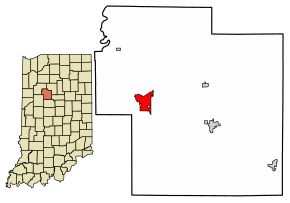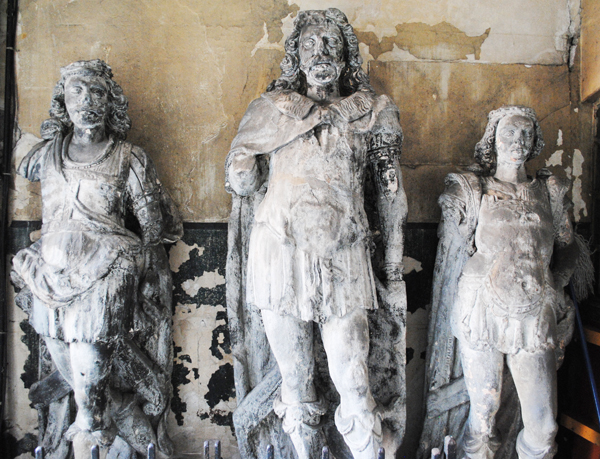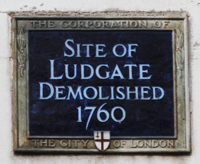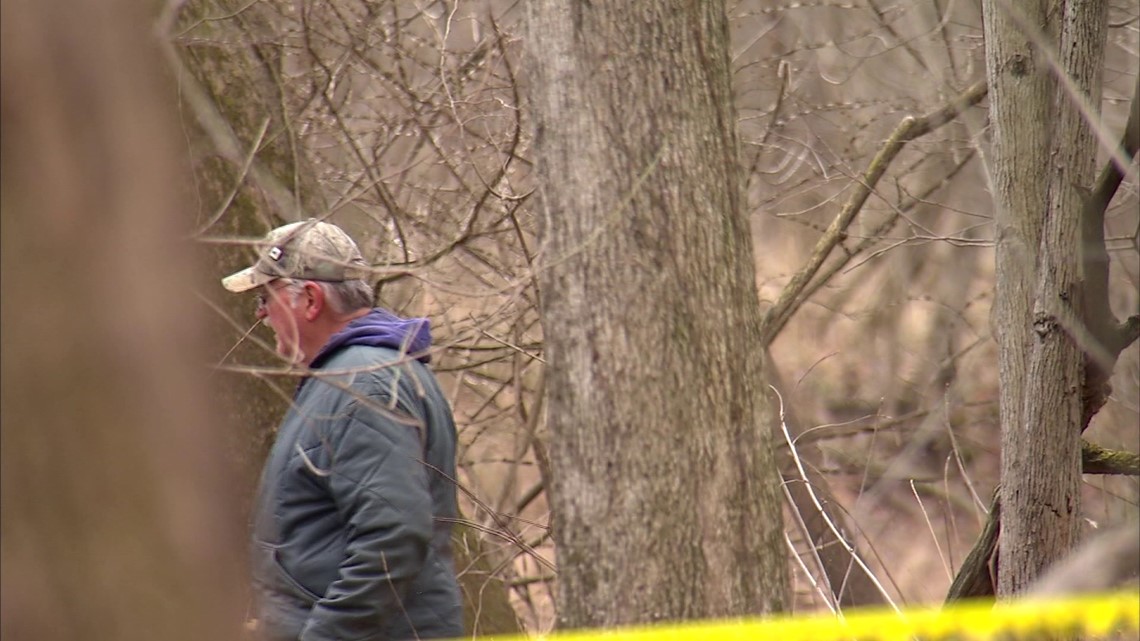UPDATE ADDED 12/4/23; 12/5/23 at the end of the post; COMMENTS ADDED 12/6/23
My purpose in researching this crime and creating this post is to bring the truth to light. Whether you realize it or not, what happened in DELPHI affects YOUR LIFE. This ; not a one person crime, not even a small group crime. Not a crime of passion or of domination and control. This was a very important ritual. Designed and brought to fruition by a very well organized and very well connected group of persons, under the influence and through the power of some very dark forces.
People’s understanding of anything is limited by their personal experience. It is impossible to make a judgement about any part of the DELPHI case without researching deeper. The history of Indiana, the history of Carrol County, the history of DELPHI and why was it named after Ancient DELPHI Greece, the history of the Aryan brotherhood and the KKK, the geography of the area, the symbolism of the brotherhood and of NORSE pagans, etc. Our minds cannot comprehend things of which we have no knowledge, especially spiritual things, and the occult/hidden things.
There is POWER in words, symbols and numbers. Remember GOD SPOKE the world into existence. Every thing about this crime was very carefully executed. Rituals are different from random acts of violence or murder. Rituals must be enacted according to the requirements and demands of the spirits/entities involved and/or invoked.
Every word, symbol or number has intent and purpose. They depend on the desired results and/or manifestations. INTENT is very important.
So, my question to you is, what are you praying? What are you speaking out? With what types of agendas and purposes are you aligning? What are your intentions? What would you like to see manifested in the earth? Are you seeking the will of GOD? Are you seeking your own selfish will? Or, are you serving the dark side?
SATURN – HEXAGON – DELPHI
They have been covering up and messing up this investigation for so long. Now they are trying to make it a case of whether they have the wrong man, or one man could commit this act alone. They are doing all they can to downplay the obvious signs of pagan ritual sacrifice. It really doesn’t matter at this point if they put one man, or a few people in prison for the crimes against these two girls. The truth is there are a lot people involved. And some of them very powerful people. There are forces behind this crime that are beyond understanding.
What we need to focus on is PRAYER. We need to start facing the truth about who we are really up against. Spiritual battles are won in the SPIRIT. These two girls have passed on to the next realm. We can do nothing really to help them. BUT, we can try to prevent as many future similar crimes as we can. There needs to be prayer, and fasting going up to heaven. We need to seek the face of GOD EVERYDAY! He alone can make real change happen.
COMMENTS ADDED 12/6/23
I saw a video yesterday that really made me shake my head at the stupidity of the creator of it. He was walking through the wooded area where these two young ladies were terrorized and sacrificed. As he walked he was mocking those who say the branches laid on their bodies were runes. He was showing all the branches laying around in the woods and laughing saying Ooooo Conspiracy Theorists would point at these an say they are runes. Idiot. Of course many branches that just fall naturally and where they fall, can look like runes. Why because that is what the Norse Religion is all about. Nature. They saw the shapes made in nature an formed the runes. BUT, branches just lying around have no specific meaning. They are just branches. However, when someone who follows the beliefs connected with RUNES, commits murder for Ritual purposes and using individually chosen branches and places them very strategically on the bodies…that is another story. Those branches then DO become RUNES. Runes intended to aid them in their purposes whether that be divination, or to gain power, or to invoke the presence of certain forces or entities. You can count on that. These girls were not just random victims of violence. These girls were single out, pursue, ritualistically abused and sacrificed.
Idiots who think the know everything and who are closed minded to truth and spiritual things are entitled to their opinion. And even entitled to share their opinion of what happened. It serves NO purpose, other than to feed their ego, to ridicule other possibilities, theories or beliefs. It is an injustice to the girls because it causes people to close their minds to the very factors that could bring justice not only for Libby and Abby but for everyone who is suffering under the hands of these people who practice ritual sacrifice. People need to wake up the fact that this stuff goes on. It has been going on as long as there have been worshipers of pagan gods and goddesses, Satan and his fellow fallen angels, or nature itself.

Abigail Joyce “Abby” Williams.
Abigail (name) – Wikipedia
Abigail is a feminine given name. The name comes from the Biblical Hebrew name Hebrew: אֲבִיגַיִל / אֲבִיגָיִל ʾĂvî-Ghayil, meaning “my father’s joy” (alternatively “my father is exulted” or “my father is joyful”, among others). It is also a surname.
abbey (n.)
abbot (n.)
Joyce (name) – Wikipedia
It is derived from the Old French masculine name Josse, Goce, which derived from the Latin name Ludocus, the Latinized form of the Breton name Judoc meaning “lord”. The name became rare after the 14th century, but was later revived as a female given name, which derived from the Middle English joise meaning “rejoice”.
ORIGIN:BretonNAME ROOT:Lud Oc > IODOC > JUDOC
MEANING:*This name derives from the Breton “Judoc” after Latinized “Iudocus,” composed of two elements: “iudd” (chief, lord) plus “oc” (diminutive suffix). In turn, the name means “little lord, young lord.” Between the end of the Middle Ages and the end of the 14th-century, it fell into disuse as a male name, barely surviving as a feminine. The name Joyce has resumed its success, perhaps also thanks to the medium English term “joise,” which means “rejoice,” which, however, comes from the Latin “iŏcōsus.” Saint Judoc, Saint Joyce, or otherwise known as Saint Josse (600–668 AD), was a 7th-century Breton noble. Though he was never officially canonized, Saint Judoc is considered to be a saint. Judoc was a son of Juthael, King of Brittany. He renounced his wealth and position to become a priest and lived alone for the rest of his lifetime in the coastal forest near the mouth of the River Cache. The feast day is traditionally celebrated on December 13.
Lud
Lud (Heb. id. לוּד, derivation unknown; Sept. Λούδ, but in Ezekiel Λυδοί; Auth.Vers. “Lydia,” in Eze 30:5), the name apparently of two nations. SEE ETHOLOGY.
1. The fourth son of Shem (B.C. post 2513), and founder of a tribe near the Assyrians and Aramasans (Ge 10:22; 1Ch 1:17). According to Josephus (Ant. 1:6, 4), they were the Lydians; (King Lycas and Lycanthropy) in which opinion agree Eustathius, Eusebius, Jerome, and Isidore, and among moderns Bochart (Phaleg. 2:12) and Gesenius. On the contrary, Michaelis (Spicileg. 2:11.4 sq.) reads הוד, and understands the Indians (see also his Supplement, No. 1416; comp. Vater, Comment. 1:130). Lud would thus be represented by the Lydus of the mythical period (Herod. 1:7). “The Shemitic character of the manners of the Ludim, and the strong Orientalism of the art of the Lydian kingdom during its latest period and after the Persian conquest, but before the predominance of Greek art in Asia Minor, favor this idea; but, on the other hand, the Egyptian monuments show us in the 13th, 14th. and 15th centuries B.C. a powerful people called RUTEN or LUDEN, probably seated near Mesopotamia, and apparently north of Palestine. whom some, however, make the Assyrians. We may perhaps conjecture that the Lydians first established themselves near Palestine, and afterwards spread into Asia Minor; the occupiers of the old seat of the race being destroyed or rermoved by the Assyrians.” With the latter supposition, compare the apocryphal statement in Judith 2:23. SEE LYDIA.
2. One of the Hamitic tribes descended from Mizraim (Ludim, Ge 10:13), apparently a people of Africa (perhaps of Ethiopia), sprung from the Egyptians, and accustomed to fight with bows and arrows (Eze 27:1C; 30:5; Isa 66:19, where they are associated with Cush and Phut; comp. the Ludim, Jer 46:9, and the Phud and Lud of Judith 2:23). Some have. referred the name to the people of Luday, on the western coast of Africa, south of Morocco (see Michaelis, Spicileg. 1:259 sq.; also Suppl. No. 1417); and combine with this the mention of a river Laud in Tangitania (Pliny , 2). Others, as Bochart (Phaleg, 4:56) and Gesenius (Comment. ad loc. Isa.), regard them as a branch of the Ethiopians. Hitzig (Comment. ad loc. Isaiah and Jeremiah) thinks that the Libyans are intended (by an interchange of letters), but Nulbiua appears to be rather indicated by the scriptural notices. Still more improbable is the supposition of Forster (Ep. ad Michael. page 13 sq.), that the inhabitants of the oases are intended, designated in Coptic by a term having some resemblance to Lud. The Arabic interpreters have Tanites; the Targum of Jonathan renders inhabitants of the nome of Neut. The opinion of Michaelis (Suppl. No. 1418), that by the Ludim the prophets meant the Lydians, has lately been re-enforced by Gesenius (Thes. Heb. page 746) with the remark that the Egyptians and Tyrians employed soldiers from Asia Minor in their armies (Herod. 2:152, 154, 163; 3:1). But the Egyptians, at least, had also mercenary troops from Africa, and the Asiatics referred to were only from Ionia and Caria. Rosellini (Monument. stor. III, 1:321 sq.) speaks of a province of Ludin, but the locality is uncertain. SEE LUDIM.
Lud
A mythical king of Britain, mentioned by Geoffrey of Monmouth. He was the eldest son of Heli, and brother of Cassibellaun and Nennius. His sons were Androgeus and Tenuantius. He became famous for beautifying London, for the building of cities, and for rebuilding the walls of Trinovantum. He is reputed to be buried by the gate which bears his name, Parthlud, or in Saxon, Ludesgata.
King Lud
Treasures of London – King Lud and his sons…
A mythical figure from early Britain, King Lud is said to have been a pre-Roman king of Britain who rebuilt London (which according to legend had been originally founded by the exiled Trojan Brutus) and from whom London derives its name.
Lud is said by some to have given his name to the gateway known as Ludgate (although others say it comes from an Old English term meaning swing or postern gate – see our earlier post here for more on Ludgate).
This series of badly weathered statues – depicting King Lud and his two sons, apparently named Androgeus and Theomantius – was originally located on the gate. In fact, the legend goes, the king was buried under it.
Following the gate’s demolition, the statues – said to date from 1586 with the name of the sculptor now lost to time – were moved here at some point to the vestry porch of St Dunstan-in-the West in Fleet Street.
Lost London: Gates Special – Ludgate
We’re launching a new ‘Lost London’ special looking at some of the now disappeared gates of London. First up is Ludgate which once stood on the western side of the city.
The gate is believed to have been constructed in Roman times and is known to have been rebuilt a several times – once in 1215 and another time after it was destroyed in the Great Fire – before being demolished in 1760 to allow for the road to be widened.
The origins of the name – which is today commemorated in street names like Ludgate Hill and Ludgate Circus – are sketchy but may have been named after the mythical pre-Roman King Lud, who was, so the legend goes, buried underneath this portal (this myth was popularised by the 12th century writer Geoffrey of Monmouth). Others have suggested ‘lud’ is a corruption of ‘flud’ or ‘flood’ and the gate was so named because it prevented the city being flooded by the River Fleet. Another possibility is that ‘lud’ is simply an old English word for a postern gate, a small secondary gate.
Whatever the origins of its name, it has been suggested it was through Ludgate that William the Conqueror passed when first entering the city. In 1377 it became a prison for petty criminals like debtors and trespassers – serious criminals were sent to Newgate – and this lasted until its final destruction.
There is a blue plaque on the wall of the church of St Martin-within-Ludgate in Ludgate Hill marking where Ludgate once stood (pictured above). It is believed that some badly corroded statues standing under a porch at the church of St Dunstan-in-the-West on Fleet Street are of Lud and his sons and were taken down from the gate before its demolition. William Kerwin’s statue of Queen Elizabeth I which dates from 1586 sits in a niche on the front of the church is also believed to have been removed from Ludgate.
spacerLludd Llaw Eraint From Wikipedia, the free encyclopedia
Lludd Llaw Ereint, “Lludd of the Silver Hand“, son of Beli Mawr, is a legendary hero from Welsh mythology. As Nudd Llaw Ereint (the earlier form of his name, cognate of the IrishNuada Airgetlám, derived from the pre-Roman Celtic god Nodens) he is the father of Gwyn ap Nudd.[1]He is probably the source of king Ludfrom Geoffrey of Monmouth‘s History of the Kings of Britain.[2]In the Mabinogion tale of Lludd and Llefelys, which influenced Geoffrey of Monmouth’s work, he is the ruler of Britain while his brother Llefelys ruled Gaul. Lludd calls on Llefelys to rid Britain of three plagues then afflicting the kingdom. Philological connection suggests that there was once a memorial to Lludd at the site of St Paul’s Cathedral, London, near Ludgate, which is named after him.[2]
Etymology
The name Nudd, cognate with the Irish Nuada and related to the Romano-BritishNodens or Nodons worshiped at Lydney Park in Gloucestershire,[1] probably derives from a Celticstem *noudont- or *noudent-, which J. R. R. Tolkien suggested was related to a Germanic root meaning “acquire, have the use of”, earlier “to catch, entrap (as a hunter)”, and together with the “silver hand” epithet detects “an echo of the ancient fame of the magic hand of Nodens the Catcher”.[3] Similarly, Julius Pokorny derives the name from a Proto-Indo-European root *neu-d- meaning “acquire, utilise, go fishing”.[4]
The name Nudd Llaw Ereint probably assimilated and shifted to Llud Llaw Ereint through alliteration, as suggested by John Rhys and later by Joseph Vendryes.[5][6]
The byname “Llaw Ereint” or “llawereint” is glossed as “of the Silver Hand” or “Silver-handed”.[5] Welsh eraint is listed as meaning “a round body; a ball; a bowl, a cup; a pear”, probably related to the adjective erain “abounding with impulse”, but ereint has been defined as “silver cup”, no doubt owing to Welsh arian “silver”.[7][8]
ludicrous (adj.)
1610s, “pertaining to play or sport”(a sense now obsolete), from Latin ludicrus “sportive” (source of Old French ludicre), from ludicrum“amusement, game, toy, source of amusement, joke,” from ludere “to play.” This verb, along with Latin ludus “a game, play,” is from the PIE root *leid- or *loid- “to play,”perhaps literally “to let go frequently” [de Vaan], which is the source also of Middle Irish laidid “impels;” Greek lindesthai “to contend,” lizei “plays;” Albanian lind “gives birth,” lindet “is born;” Old Lithuanian leidmi “I let,” Lithuanian leisti “to let,” laidyti “to throw,” Latvian laist “let, publish, set in motion.”Sense of “ridiculous, apt to evoke ridicule or jest” is attested from 1782. Related: Ludicrously; ludicrousness. The Joker, Jester, Clown/ The Devil also from 1610s
Lu Dongbin | Immortal Sage, Taoist Master, 8 … – Britannica
Lu awoke and renounced the world. He is by far the most renowned of the Eight Immortals and as Luzi (“Patriarch Lü”) is credited with founding a Daoist sect that absorbed Nestorian Christian influence. The Daoist canon contains dozens of treatises attributed to Lu, among them The Secret of the Golden Flower.
Lugh was a master of many talents. As the god of oaths, he held domain over rulers and nobility. He also served as the god of justice in its many forms; his judgement was often swift and without mercy. In what may seem like a contradiction, Lugh was also a trickster who was willing to lie, cheat, and steal to overcome his opponents.
The connections between Lugh/Lucifer/Lycan/Lux were already presented my first post on the Delphi Murders. There are so many other important connections laid out in that post as well. If you have not seen it, check it out below:
DELPHI RITUAL
Williams
Williams – Baby Name Meaning, Origin and Popularity
Origin:German. Meaning: Helmet of protection; Resolute protector. Don’t be fooled by Williams’ surname vibes! This moniker is making serious waves as a first name alongside Lincoln, Hudson, and Hunter. Williams is a masculine name meaning “helmet of protection” or “resolute protector” in Old German.Sep 13, 2023
From the Germanic name Willehelm meaning “will helmet”, composed of the elements willo “will, desire” and helm “helmet, protection”. An early saint by this name was the 8th-century William of Gellone, a cousin of Charlemagne who became a monk (Abbot/Abbess). The name was common among the Normans, and it became extremely popular in England after William the Conqueror was recognized as the first Norman king of England in the 11th century. From then until the modern era it has been among the most common of English names (with John, Thomas and Robert).
spacer
Liberty Rose Lynn “Libby” German.
liberty (n.)
late 14c., “free choice, freedom to do as one chooses,” also “freedom from the bondage of sin,” from Old French liberte “freedom, liberty, free will” (14c., Modern French liberté), from Latin libertatem (nominative libertas) “civil or political freedom, condition of a free man; absence of restraint; permission,” from liber “free” (see liberal (adj.)). At first of persons; of communities, “state of being free from arbitrary, despotic, or autocratic rule or control” is by late 15c.
The French notion of liberty is political equality; the English notion is personal independence. [William R. Greg, “France in January 1852” in “Miscellaneous Essays”]
Nautical sense of “leave of absence” is from 1758. The meaning “unrestrained action, conduct, or expression” (1550s) led to take liberties “go beyond the bounds of propriety” (1620s). The sense of “privileges by grant” (14c.) led to the sense of “a person’s private land” (mid-15c.), within which certain special privileges may be exercised, which yielded in 18c. in both England and America a sense of “a district within a county but having its own justice of the peace,” and also “a district adjacent to a city and in some degree under its municipal jurisdiction” (as in Northern Liberties of Philadelphia). Also compare Old French libertés “local rights, laws, taxes.”
Liberty-cap is from 1803; the American Revolutionary liberty-pole, “tall flagstaff set up in honor of liberty and often surmounted by a liberty-cap” is from 1775. Liberty-cabbage was a World War I U.S. jingoistic euphemism for sauerkraut.
also from late 14c.
Rose Etymology
From a Norman name of Germanic origins, likely made up of Proto-Germanic *hrod (“fame”) and *heid (“kind, sort, type”), ultimately evolved from *hrōþiz.
Introduced to England in the form Roese or Rohese. Later conflated with the vernacular word “rose”, and associated with the flower names that first became popular in the end of the 19th century. Also a nickname for names beginning with Rose-/Rosa-.
The Etymology and Symbolism of Roses
The word “rose” comes from the Latin word “rosa,” which itself comes from a Greek word that likely evolved from a Persian word. The long etymology of the word “rose” is a clue as to the long history of the importance of roses in various cultures around the world. Many different cultures and folk traditions have assigned meanings to the different colors and types of roses. There’s an entire language around the color and number of roses one person gives to another. Commonly understood meanings of roses are that red stands for true love, white for innocence, black for death or mourning, orange for passion, and yellow for friendship.
Roses as a Symbol of Religion
Various religions have long used roses as symbols of religious belief. In ancient Greece, the rose was a symbol of Aphrodite. It was also part of the Egyptian myth of Isis. More modern religions still use the rose symbolically. The rose is a repeated leitmotif of Judaism that symbolizes both Israel and royalty. Jewish people are also compared with roses in the Bible. After the rise of Christianity, the rose became heavily linked with the image of the Virgin Mary. Some Catholic sects place crowns made of roses on statues of the Virgin Mary during different religious holidays. Islam also incorporates these flowers into its symbology.
Roses as a Symbol of Love
Roses are an important symbol of love and relationships. Red roses are one of the most well-known symbols of love. The number of roses in a bouquet also symbolizes the depth of feelings. Three roses, for example, say “I love you.” Seven roses are a symbol of infatuation. Nine roses represent eternal love. And a dozen roses says “be mine.”
Roses as National Symbols
England has long had the rose as its national flower. During the 15th century, England had a series of civil wars known as the Wars of the Roses. The House of Lancaster was represented by red roses, while the competing House of York was symbolized by a white rose. Descendants from both houses married and created the House of Tudor, which was symbolized by the Tudor rose, a rose that’s both red and white. Shakespeare drew on this symbolism when writing Richard III. In modern times, the English rugby team has used the red rose on its uniforms since 1871.
The United States adopted the rose as its national floral emblem in 1986. Various species of the flower are also the state flowers of Iowa, North Dakota, Georgia, New York, and Oklahoma. Portland, Oregon, is known as the City of Roses, as is Pasadena, California, which is home to the Rose Bowl.
spacer
Lynn
Lynn: Name Meaning, Origin, Popularity – Verywell Family
Lynn is a classic name in many English-speaking countries. However, while it is most commonly used for girls, there is also a tradition of Lynn as a boy name as well. It is derived from the Welsh and Celtic words for “lake,” “waterfall,” “pool,” and “pond.”Nov 17, 2022
German
1630s, “of Germany or Germans,” from Latin Germanicus, from Germani (see German (n.)). From 1773 as “of the Teutonic race;” from 1842 especially with reference to the language family that includes German, Dutch, English, etc. As a noun, the name of that language family, by 1892, replacing earlier Teutonic. Germanical is attested from 1550s.
spacer
If you are convinced that this was not a ritual sacrifice, or that it could not have been perpetrated by Odinists or White Supremist. YOU are so wrong.
spacer
These 30 hate groups operate in Indiana, Southern Poverty …
IndyStar
spacer
These are the hate groups operating in Indiana
WRTV
Indiana Aryan Brotherhood
Anti-Defamation League
Indiana Hate Groups
The Courier-Journal
spacer
Indiana
Southern Poverty Law Center
Indianapolis officials say white nationalist group didn’t …
WFYI
Report: White supremacy on the rise in Indiana
WISH-TV
Indiana Klan
Hate incidents, groups grow in Indiana as far-right rhetoric ...
White supremacy on the rise in Indiana
Reddit · r/Indiana
‘Odinism’: How white supremacists co-opt pagan symbols ...
Ku Klux Klan in Indiana
Pamphlets advocating white supremacy left in Tri-State neighborhood
The pamphlets, delivered in sealed plastic bags, convey Nazi symbols and white supremacist ideology.
Two Dearborn County residents say they the pamphlet appeared in a clear plastic bag in their driveway. They say they don’t want that kind of message spread in their community.
“There’s not a reason to be like this,” one said.
 Payton Marshall
 @paytontvnews
‘It’s propaganda for white supremacy.’ Indiana residents are distraught after receiving these flyers in their driveway. My full story tonight at 10 on Replying to @paytontvnews and @FOX19
|
The couple have opted to speak on the condition of anonymity. They say they felt it was important to speak up because they have heard of other communities being targeted with the pamphlet.
The woman says she was outside Sunday morning when she saw the bag containing the pamphlet.
“Noticed that one side had like Nazi symbols and Hitler on it, and the other side talked about white supremacy,” she said.
The front of the pamphlet reads “Europa the Last Battle” and the top reads “We defeated the wrong enemy.”
Said the woman, “It’s propaganda for white supremacy.”
The back of the pamphlet reads “Our children pay the price for our inaction. Stand up white man.”
The bottom of the back references a website with the URL containing the phrase “White Lives Matter.”
The woman says she was upset when she first saw it.
“I was mad,” she said. “I was ticked off.”
The couple says their community is safe, quiet and caring. They say the pamphlet is not what the community is known for.
“It was just disheartening that this is coming back up after so many years,” she said.
The couple says they do not know who is responsible.
See a spelling or grammar error in our story? Please include the title when you click here to report it.
Copyright 2022 WXIX. All rights reserved.
spacer
2021 Indiana State Rail Plan
IN.gov
spacer
|
Quick facts for kids
Delphi, Indiana
|
|
|---|---|

Sign depicting a horse-drawn canal boat.
|
|
| Motto(s):
“Home of the Wabash and Erie Canal“
|
|

Location of Delphi in Carroll County, Indiana.
|
|
| Country | United States |
| State | Indiana |
| County | Carroll |
| Township | Deer Creek Township |
| Area | |
| • Total | 2.71 sq mi (7.03 km2) |
| • Land | 2.71 sq mi (7.03 km2) |
| • Water | 0.00 sq mi (0.00 km2) |
| Elevation | 568 ft (173 m) |
| Population
(2020)
|
|
| • Total | 2,961 |
| • Density | 1,090.61/sq mi (421.10/km2) |
| Time zone | UTC-5 (EST) |
| • Summer (DST) | UTC-4 (EDT) |
| ZIP code |
46923
|
| Area code(s) | 765 Exchange: 564 |
| FIPS code | 18-17614 |
| GNIS feature ID | 0433461 |
| Website | www.cityofdelphi.org |
Delphi is a city in and the county seat of Carroll County, in the U.S. state of Indiana. Located twenty minutes northeast of Lafayette, it is part of the Lafayette, Indiana Metropolitan Statistical Area. The population was 2,893 at the 2010 census.
History
Delphi was platted in 1828. It took its name from the ancient city of Delphi, in Greece. Several months after Delphi was founded, it was designated county seat.
The Barnett-Seawright-Wilson House, Carroll County Courthouse, Delphi City Hall, Delphi Courthouse Square Historic District, Delphi Methodist Episcopal Church, Foreman-Case House, and Niewerth Building are listed on the National Register of Historic Places
Geography
Delphi is located at 40°35′15″N 86°40′18″W.
According to the 2010 census, Delphi has a total area of 2.73 square miles (7.07 km2), all land.

spacer
If you view the Crime Scene, it is very evident that the Algiz Rune is presented on Abby’s body.

spacer
Algiz Rune Meaning In Norse Mythology
The Algiz Rune: An Overview
Algiz, represented as a simple ‘Z’ shape, is one of the 24 symbols in the Elder Futhark, the earliest known runic alphabet used by Germanic tribes. It is the fifteenth rune in the sequence and carries various interpretations. The Algiz rune has often been associated with the elk, a creature revered for its majesty and strength. Others believe it symbolizes a splayed hand reaching up to the divine or warding off danger.
What Is the Algiz Rune Associated with?
The Algiz rune, also known as Elhaz, is associated with several significant concepts in Norse mythology. The most prevalent association is with protection. Just as an elk uses its large, formidable antlers to protect itself from predators, the Algiz rune is believed to offer a shield against negative energies, physical harm, or spiritual adversity. It is often viewed as a powerful protective talisman.
The Algiz rune is also linked to the elk, a revered Norse culture creature symbolizing strength, nobility, and survival. Some interpretations connect Algiz to the World Tree, Yggdrasil, which embodies the cosmos and the interconnection of all realms of existence in Norse cosmology.
Finally, the Algiz rune is associated with life transitions and transformations, signifying the ability to navigate change with resilience and grace. It carries a message of hope, reminding us that we are protected and guided throughout our spiritual journey.
spacer
 |
 |
Indiana Rivers Map, Rivers in Indiana
 |
 |
Indiana US State PowerPoint Map, Highways, Waterways, Capital and Major Cities


Magnetic Maps Overview Maps and Profiles
Chuck Connor,Laura Connor
Potential Fields Geophysics

 |
 |
 And here is the information related to that Ear Rune:
And here is the information related to that Ear Rune:spacer
Anglo-Saxon and Frisian Runes – Rune Meanings
| Frisian (plural Frisians) A member of the Germanic ethnic group which is native to the region of Frisia (which is in the Netherlands, northern Germany, and southern Denmark). A person who is from or who has long resided in the Dutch province of Friesland. Source |
Stands for: Soil of Earth (actually the dust our bodies become after death)
Casting meaning: Ear symbolizes the grave that we will all return to. However the only way that we can die is because there was life to begin with. “Without life, there is no death and without time there is no life.” More generally Ear signifies the unavoidable end of all things.
spacer
THE “NEW” RUNES PART VI
This rune is called Ear and its modern letter or sound is EA, its meaning is Death, the grave, inevitable ending.
I call it the rune of no hope, or the ending of hope.
Body part: Colon/anus.
Associated Maladies: Colitis, colon disease, hemorrhoids. General old age. Gangrene.
Action: Degradation and wear-and-tear of old age. Rotting down.
Solution: There is no solution. You cannot save this. It is dying. There is nothing you can do.
Ear symbolizes the grave that we will all return to, the dust our bodies become after death. More generally Ear signifies the unavoidable end of all things. It is not death as seen in the Tarot, it is not transformation, it is the dead-end where the physical form ends. This rune has no association with what happens after. Some things in life come to natural ends and cease to have use or purpose, this rune is that end. When the physical body dies, all oaths end, what happens beyond is not our concern, that is all the concern of the Gods.
Connected to the North, Earth is considered the ultimate feminine element. The Earth is fertile and stable, associated with the Goddess. The planet itself is a ball of life, and as the Wheel of the Year turns, we can watch all the aspects of life take place in the Earth: birth, life, death, and finally rebirth. The Earth is nurturing and stable, solid and firm, full of endurance and strength. In color correspondences, both green and brown connect to the Earth.
Ear then is a simple rune to understand, and is useful for putting things to rest, ending bad relationships, cutting ties, ending patterns and accepting that inevitably, everything comes to an end. Source
spacer
I was curious about the image of Delphi on the Carrol County map shown on the “Delphi, Indiana facts for kids” site. I blew it up and you can see it on the far right below. Inside that image kind of looks like a uterus. When I pulled up Delphi on Google maps that same outline appeared. I drew the Ear symbol within it because it seriously looked to me like it belonged there.
 |
 |
 |
spacer
Below are some of the maps from above side by side. so you can ge an idea of the area. Curiously enough there is a Ear Rune through the center of the state.
spacer

| DELPHI on The MAP | MAGNETISIM MAP | RIVERS OF INDIANA | HiGHWAYS OF INDIANA |
spacer
In my research, I discovered that there are a lot of LIBERTY Townships in Indiana. One of which is only 14 minutes from DELPHI, straight up Hwy 25.
Liberty township, St. Joseph County, IN
Liberty Township in Parke County, Indiana,
Liberty Township, Crawford County, Indiana
Liberty Township, Delaware County, Indiana, 1861
Liberty township, Grant County, Indiana (IN)
Liberty Twp, Shelby Co, IN:
Liberty Township / Tipton County, IN
Liberty Township – Valparaiso IN
Liberty Township, Warren County 1877, Indiana
Liberty Township, Wells County, Indiana
Liberty Township, White County, Indiana
spacer
DELPHI INDIANA to LIBERTY TOWNSHIP INDIANA on Hwy 25
spacer
Obviously Freedom and Liberty are interchangeable words.
Delphi Freedom Bridge & Veterans Memorial Plaza
The Bridge was dedicated April 25, 2015 and named the Freedom Bridge due to the city from which it originally came, Freedom, Indiana. The veterans memorial plaza features a 14-foot tall, black granite panel with a laser-etched steam engine on its wall.
The City of Delphi was fortunate to obtain the Freedom Bridge, which was originally built in 1897, dismantled and then reconstructed in 2002. Originally meant for Conner Prairie, the bridge found its location at Delphi, Indiana. Now, it forms the new connecting link for the historic Monon Trail. The development of the Hoosier Heartland Highway (SR 25) had cut the trail. Hence, the 302-foot (32 in numerology) bridge found its new resting place spanning the highway. Also, it brings a bit of history into the surrounding agricultural historic district.
The Federal Transportation Enhancement and “Major Moves” offered combined funding for the project. The bridge has a thru truss reconstruction design for pedestrian loading. In addition, it has subdued lighting which highlights the structure for the public traveling on SR 25. Also incorporated into the design are plazas located at each end of the bridge. These plazas provide limestone blocks seating and signage to tell the historical story of the bridge and the significance of the Monon Trail.
Landscape Architectural Features:
Plazas anchor both ends of Freedom Bridge at Delphi, serving trail users and the Delphi community.
The original stone abutment, relocated from the original construction site form the limestone monolith benches and select pieces of the masonry signs. Also, landscape plantings and low maintenance native grasses and wildflowers accentuate the plazas and provide edge definition.
Find more DLZ projects for Landscape Architecture & Planning and Pedestrian Pathways, here.
spacer
 spacer
spacer
From the above map you can see that the rivers of Indiana manage to create the Algiz Rune all over the state. You should also notice that Carrol County is where one of three of those Runes come together, with the Eel River and the Wabash running through them and combining.
Algiz Rune – History and Meaning
A Symbol of Protection
The Algiz rune is considered the most powerful rune of protection. Its symbolism is derived from the name of the rune itself, as the Proto-Germanic term algiz means protection. Also its ideographic representation may have been derived from a basic sign of defense—a splayed hand.
In Gothic, the now extinct East Germanic language used by the Goths, the term algis is associated with the swan, which has been connected with the concept of the valkyrjur—mythical beings who fly by means of swan feathers. In mythology, they are protectors and life givers. In the ancient times, the symbol was carved into spears for protection and victory.
The Algiz rune also resembles the elk sedge, a water plant known as elongated sedge. In fact, the Germanic term elhaz means elk. In an Old English rune poem, the elk-sedge flourishes in the water and grows in marshy regions—yet it wounds anyone who tries to grasp it, associating it with defense and protection.
The Gothic term alhs, meaning sanctuary, has been related to the Algiz rune as well. It’s believed to be a protective grove dedicated to gods, so the rune also has the protective power of the divine—the Alcis twins. In the Germania by Tacitus, the divine twins were sometimes depicted as being joined at the head, as well as represented as elk, deer, or hart.
Spiritual Connection and Consciousness
From an esoteric perspective, the Algiz rune represents the spiritual connection between gods and humanity, as the Germanic peoples communicate with their gods through the sacred posture of the rune—or stodhur. The rune is also associated with the Bifrost, the three-colored bridge of Norse mythology protected by Heimdallr, which connects Asgard, Midgard, and Hel.
In magic, the Algiz rune is used for communication with other worlds, especially Asgard, the world of the Aesir or Norse gods, including Odin, Thor, Frigg and Baldr. The rune is also used for communication with the cosmic wells of Mimir, Hvergelmir and Urdhr. It’s also thought to be the force used by Heimdallr, the watchman of gods, in his aspect as a guardian of Asgard.
In the Iconography of Nazi Regime
In the 1930s, the runes became sacred emblems of Nordic cultural nationalism, which resulted in their addition as a symbol of the Nazi regime. Nazi Germany appropriated many cultural symbols to represent their idealized Aryan heritage, such as the Swastika and the Odal rune, as well as the Algiz rune.
The Algiz rune was featured on the SS’s Lebensborn project, where pregnant German women were regarded as racially valuable and encouraged to give birth to their children in order to increase the Aryan population.
During World War II, foreign children of Aryan appearance were kidnapped from the countries of occupied Europe in order to be raised as Germans. The word Lebensborn itself means Fount of Life. Since the Algiz rune was used in the campaign, it became associated with the regime’s racial ideology.
The Algiz Rune in Modern Times
Because of the symbolic meanings of the Algiz rune, many use it in modern paganism, magic, and divination. In fact, the casting of runes is a popular practice, where each stone or chip marked with the symbol is laid out in patterns like tarot cards. Like many ancient symbols, runes also made their way into pop culture, and have been featured in several fantasy novels and horror films.
In Festivals
In Edinburgh, Scotland, the Algiz rune serves as an aesthetic motif and a ritual element in certain festivals. In fact, runes are incorporated into the regalia of Beltaners who are members of the Beltane Fire Society, a community arts performance charity that hosts several Celtic festivals.
However, the use of the Algiz rune at the Edinburgh Beltane festival became controversial, especially since the festival has Celtic roots and the rune itself is a Germanic symbol.
spacer
 |
 |
spacer
I spied the Eel River immediately. I also immediately saw the Algiz formations in the rivers all over the state.
Facts About Eels | Types Of Eel
DK Find Out!
Eel Facts, Types, Reproduction, Life Cycle, Classification, …
Animal Spot
spacer
Eel River (Wabash River tributary)
Wikipedia
eel (n.)
Old High German
Old High German (OHG, Althochdeutsch, German abbr. Ahd.) is the earliest stage of the German language, conventionally covering the period from around 700 to 1050.[1]
https://en.unionpedia.org/i/Old_High_German
Alanna
Alana, Alanna, Alannah is a girl’s given name.
Alemanni
The Alemanni (also Alamanni; Suebi “Swabians”) were a confederation of Germanic tribes on the Upper Rhine River.
Alemannic German
Alemannic (German) is a group of dialects of the Upper German branch of the Germanic language family.
Aller
The Aller is a long river in the states of Saxony-Anhalt and Lower Saxony in Germany.
Allerheiligenstriezel
Allerheiligenstriezel or simply Strietzel (regional names include Allerseelenzopf, Seelenspitze, Seelenbrot, or Allerseelenbreze) is a braided yeast pastry.
Alliteration
Alliteration is a figure of speech and a stylistic literary device which is identified by the repeated sound of the first or second letter in a series of words, or the repetition of the same letter sounds in stressed syllables of a phrase.
Alliterative verse
In prosody, alliterative verse is a form of verse that uses alliteration as the principal ornamental device to help indicate the underlying metrical structure, as opposed to other devices such as rhyme.
Alp (folklore)
An Alp (plural Alpe or Alpen) is a supernatural being in German folklore.
Alpine transhumance
Alpine transhumance is transhumance as practiced in the Alps, that is, a seasonal droving of grazing livestock between the valleys in winter and the high mountain pastures in summer (German Alpwirtschaft, Almwirtschaft from the term for “seasonal mountain pasture”, Alp, Alm).
Alruna
Alruna (Old Norse Ölrún, Old High German Ailrun, Modern German Alruna, Alraune) is a Germanic female personal name, from Proto Germanic *aliruna (or possibly *agilruna), which is formed from runa “secret, rune” and a debated prefix that may be ali-, agil-, or alu-.
Alsace
Alsace (Alsatian: ’s Elsass; German: Elsass; Alsatia) is a cultural and historical region in eastern France, on the west bank of the upper Rhine next to Germany and Switzerland.
Altieri family
The Altieri family was an ancient noble family of Rome, present in the history of the city since the Middle Ages.
Altweidelbach
Altweidelbach is an Ortsgemeinde – a municipality belonging to a Verbandsgemeinde, a kind of collective municipality – in the Rhein-Hunsrück-Kreis (district) in Rhineland-Palatinate, Germany.
Alvina
Alvina is a female given name with the meaning “elf friend”, “amicable”, “friendly”, “warrior princess”, “the most high” and “magical being”.
There are some pretty strange things going on in Carrol County. A number of fires in particular. We have seen above that Algiz is connected with BAAL Worship and Beltanic Festivals/Fire festivals. There are many people who worship FIRE.
Mother, 2 children perish in Flora fire | Local News
Pharos-Tribune
Flora Fires on COMUMBIA ST
House at center of deadly ’16 fire comes down
The rental property at the corner of East Columbia and South Division streets in Flora where four sisters perished in a fire on Nov. 21, 2016, was torn down Monday afternoon. A judge determined this past summer there was no need to preserve the property and approved the demolition order. The fire claiming the lives of Keyana Davis, 11, Keyara Phillips, 9, Kerriele McDonald, 7, and Kionnie Welch, 5, was determined to be arson. No one has been arrested or charged. Comet photos Mother: Gaylin Rose,
spacer
Carroll County arson suspect extradited from SD
Man Found Dead in Flora Confirmed To Be Father of Three ...
spacer
spacer
Circuit Court
Judge Benjamin Diener
Recent filings
Derrick A. German, 38, Delphi, pled guilty to dealing in methamphetamine and will spend three years on probation in lieu of jail time.
State of Indiana
The Indiana Cop Blaster includes reports covering police, prosecutorial, judicial, and snitch misconduct or other related issues in the state of Indiana.

spacer
|
BRAD HOLDER – ODINITEIn the days and weeks after the murders, Brad posted social media images that mimicked what was found at the crime scene. The crime scene imagery has never been made public to this day, so the question is how Brad knew what was left behind. Brad’s son Logan had been dating Abby before the murders. Brad was originally cleared as a suspect on March 16, 2017, one month after the murders. Brad posted other disturbing images on his social media. One showed what appears to be two dead women on the ground in a forest. Both women had tree branches and sticks on their bodies. One woman had her arm above her head, which was apparently how Libby had been found. Source |
spacer
 |
spacer
Names are allowed if in MSM (main stream media) and we use initials to save time as well as to protect those not in MSM and can not be legally named in connection to the case.
Libby’s Family:
-
Father: Derrick German (DG) Libby’s dad who lived with her a their family home in Delphi. He was the person she had arranged to pick her up from the pick up location on the MHB trail. He is also the person who started the search party after failing to find her and her calls went unanswered.
-
Mother: Carrie Timmons (CT) Libby’s mom who lived out of state. She kept in contact with Libby via SM (social media) and had spoken that day. She is largely out of the picture in the investigation given her location and is (understandably) very frustrated over the progress of the case.
-
Sister: Kelsi German (KG) 16 at the time Kelsi was the biggest consistency in Libby’s life. She is the one who dropped her sister off at the drop off point as a favour to her sister, as she felt bad for saying no initially. Kelsi is the leading figure in the media regarding the case, having taken up a career path in Criminal Psychology following the murder of her sister.
-
Grandma: Becky Patty (BP) Becky is the paternal grandma of Libby and was her legal guardian at the time from the time Libby was a toddler. She and her husband, Mike, shared the home and parental responsibility of Libby. She has taken a step down from media following her diagnosis with cancer.
-
Grandpa: Mike Patty (MP) Mike was Libby’s step grandpa, step father to Derrick. He also raised Libby from her toddler age, as well as Kelsi and his son, Cody. He was prominent in early media but stepped down following the health of his wife, Becky.
-
Cousin: Cody Patty (CP) Cody is biologically a nephew of Becky, but adopted by her and Mike. He is the legal son of the two and adoptive half-brother of Derrick. He has raised as a sibling dynamic with Libby and Kelsi but is still called their cousin by them and media.
This was Libby’s core and direct family, who either was a part of the day, as Derrick was, or are outspoken on SM and MSM. She has more, but they don’t play a big role in the day or the information we receive.
Abby’s Family:
-
Mother: Anna Williams (AW) Anna is Abby’s mother, she is quite reserved but speaks on behalf of her daughter fairly regularly. She was at work at the time Abby was dropped at the trail and had no idea her daughter was going there that day. She does not harbour any resentment towards the Patty/German family, as she stated “had she been asked, she would have, of course, said yes.”
-
Uncle: (DE) Not in media, his involvement is down to leaks on SM, by discussing the case with someone he felt he could have trusted. He isn’t really in the media so use of his name is limited.
-
Grandparents: As with DE, her grandparents stay reserved about the case. Her grandparents lived with Abby and her mother at the time of Abby’s murder.
Carroll County Sheriffs Office (CCSO)
-
Sheriff Toby Leazenby (TL)
Indiana State Police (ISP)
-
Superintendent Doug Carter (DC)
-
Sargent Kim Riley (KR)
-
Sargent Jerry Holeman (JH)
Carroll County Prosecutor Office (CCPO)
-
Former Prosecutor Robert Ives
-
Prosecutor Nicholas McLeland (Freemason)
Federal Bureau of Investigation (FBI)
The Georgia Bureau of Investigation (GBI)
City of Delphi (CD)
-
Former Mayor Shane Evans (SE)
-
Mayor Anita Werling (MAW)
MSM
-
Carroll County Comet
Content Creators
-
HNL: Down the hill (DTH) (Recognition: Interviews with CCSO, ISP, German/Patty family and Williams family)
-
Scene of the Crime (SotC) (Recognition: Interviews with German/Patty family and Williams family)
-
Murder Sheet (Recognition: Leaks recognised by the German/Patty family)
-
Gray Hughes (Recognition: German/Patty family interviews)
There are more, obviously, but with no connection to Officials or Family.
I am not USA and can not provide all US MSM links. Unfortunately, the only people discussing the case in the UK are tabloids. I will still link but I apologise in advance.
-
Thomas Bruce (TB) (I need help with this link beyond Wikipedia please)
- Brad Holder – ODINITE
These people are not named in MSM in any way and their names can not be used.
-
(TK) Father of KAK. A POI because of his association and possible cyber-access of KAK and his accounts.
-
(DP) Witness of the scene and male half of the “arguing couple” at the north end of the bridge. A POI because of his proximity to the scene.
-
(PB) Firefighter and first responder who was one of those who found the bodies of Abby and Libby. A POI because of his car being parked at the nearest possible point to the girls bodies, supposedly overnight from the 13th-14th.
-
(MH) Youth pastor. A POI because of questionable use of the churches van logging on scanners around the scene of the bridge.
-
(GK) Convicted murderer and member of the “Kokomo crew.” A POI because of his claims of knowledge and his previous real-life murders of his ex-GF and a male acquaintance. You can use his name when talking about local killers but not as an accusation of being BG (I know, I don’t make the rules)
-
(RL) Property owner of the lot, RL can be spoken about and referred to by his name as the person who owned the site the girls were found. However, as of late with the release of his search warrant paperwork he has been under accusation on online forums and SM. He has since passed on.
-
(FSG) Not really a POI, people tend to jump on accusing him once they first hear of a man loitering around the trails. Once you learn his age (old) and the fact he is actually the curator of the trail he gets a lot less suspicious. He is largely just known now as a dude who was on the trails around the time of the crime but some people are still suspicious of him.
There are more, but currently these are the main topics of conversation. Add your own initial but don’t give a big description. Curious people will search the initial in the reddit, read theories and come to their own conclusions. Just say what they did (job) and why they came to attention. I would also like for the comment section to not become debates, so keeping it simple would be ideal. This isn’t a place to discuss the likeliness of peoples participation but to help people understand the story more and engage in threads easier. Thank you.
spacer
The following video offers the best timeline and mapping of the crime I have seen. Sadly, he totally dismisses the spiritual and ritual aspects of the murders. He looks at the crime with strict logic and on the assumption of a single perpetrator that being Rick Allen.
spacer
spacer
The Yr rune ᛦ is a rune of the Younger Futhark. Its common transliteration is a small capital ʀ. The shape of the Yr rune in the Younger Futhark is the inverted shape of the Elder Futhark rune (ᛉ). Its name yr (“yew“) is taken from the name of the Elder Futhark Eihwaz rune.
Its phonological value is the continuation of the phoneme represented by Algiz, the word-final *-z in Proto Germanic. In Proto-Norse it is pronounced closer to /r/, perhaps /ɻ/. Within later Old Norse, the Proto-Norse phoneme collapses with /r/ by the 12th century.spacer
Algiz Rune – Vikings of Valhalla US
Vikings of Valhalla US
Algiz – Norse Runes Examined in Depth
Mythology Merchant
Indiana Animal Disease Diagnostic Laboratory
Purdue University
 |
 |
spacer e
e
YEW(Taxus baccata)
Ancient, morbid, toxic. The yew is one of the longest-lived native species in Europe. This has made it a symbol of death and doom, but it provides food and shelter for woodland animals.
Mature yew trees can grow to 20m. The bark is reddish-brown with purple tones, and peeling.
spacer
 Leaves
Leaves
Straight, small needles with a pointed tip, coloured dark green above and green-grey below. They grow in two rows on either side of each twig.
Mythology and symbolism
Yew trees are associated with churchyards and there are at least 500 churchyards in England which contain yew trees older than the buildings themselves. It is not clear why, but it is thought that yew trees were planted on the graves of plague victims to protect and purify the dead, and also in churchyards to stop ‘commoners’ from grazing their cattle on church ground as yew is extremely poisonous to livestock.
The Romans believed that yews grew in hell.
Yew trees were used as symbols of immortality, but also seen as omens of doom. For many centuries it was the custom for yew branches to be carried on Palm Sunday and at funerals. In Ireland it was said that yew was ‘the coffin of the vine’, as wine barrels were made of yew staves.
Yew timber is incredibly strong and durable. Traditionally, the wood was used in turnery and to make long bows and tool handles. One of the World’s oldest surviving wooden artefacts is a yew spear head estimated to be around 450,000 years old.
Anti-cancer compounds are harvested from the foliage of Taxus baccata and used in modern medicine. Yew trees contain the highly poisonous taxane alkaloids that have been developed as anti-cancer drugs. Eating just a few leaves can make a small child severely ill and there have been some deaths linked to yew poisoning. All parts of the tree are poisonous.
spacer
So, it is visually clear that the ritual of the Delphi Sacrifices was invoking the power of the RUNE Algiz. Algiz is both the YEW and the ELK. So, if the tree that Libby’s hand was point to is indeed a YEW tree, that would be very significant. Also, the ELK is a type of deer, and the body of water for this Sacrifice is Deer Creek.
IF it is not a Yew Tree… It could very well be an ASH Tree
spacer
Now of course, we have no real proof of the kind of tree Libby was laid under. At one point there was a video of a guy that supposedly got to the tree while the blood was still visible to prove it was just made by a bloody hand leaning on the tree for support. I can’t find that video now. Anyway, we don’t have all the facts in this case. BUT, we do know that the TREE played a very important role in the Ritual.
Here is a video I did find. Still don’t know if this is the tree. It does seem to be near the water, you can see it in the background. If this is the tree. It appears to be an ASH. You can see the diamond shapes in the bark like the one in the video above.
spacer
Here is some information on the TREES that are important in Norse Mythology. Any of these trees would be significant in rituals.
spacer
ASATRU AND TREES IN NORSE MYTHOLOGY

Asatru and Trees in Norse Mythology
While easy to overlook, trees served a profound place in the myths of the Northern tribes. They were used for both utility and spiritual purposes. Symbolical meaning was also embedded in the myths. Today, trees still develop a sense of mystery within, carrying the mind to enchanted places beyond the ego. Modern society still carries vestiges of spiritual traditions involving trees, most notably, the Christmas tree and the Yule log.
Had it not been for the advance of the industrial era, and the great harvesting of trees on the planet, we would still have many of nature’s oldest creations. In the mountainous regions of Northern California, the bristlecone pine tree stands erect, towering over the landscape. This tree is Nature’s great warrior, having fought against the modern era for over 5,000 years. Look at any lumberjack phto during the 19th century and you will see, North America was covered in these ancient living beings. Most trees now are less than 100 years old and it will take generations to repopulate the land as it was before the era of industrialization.
The greatest use of trees lies in its symbolic use for esoteric purposes. Every tree has three distinct features including the roots, the trunk, and the branches that extend into the heavens. The roots of the tree dig deep into the subterranean earth. They draw from the ground the nutrients required for survival. This structure also serves as the foundation that will provide a solid base against the approach of winds and storms. From there, the trunk stands above the ground, moving the nutrients ever upward into the branches and canopy. The canopy draws nutrients from the sun, and extends its glory into the heavens. This article will explore the spiritual aspect of Asatru and Trees in Norse Mythology.
The Yggdrasil

For those who honor the mythos of the North, Yggdrasil is perhaps the most well-known symbol of all. The tree itself is called the world tree. Upon Yggdrasil exists 9 worlds; distinct in their nature and with a variety of beings that inhabit them. Yggdrasil, which is the backbone of our nine living worlds, is watered by three holy wells. Each well is unique and offers its own particular kind of nourishment.
Underneath the first root of the great Yggdrasil exists Urd’s well. This well is known to perpetually water the tree keeping. In return Yggdrasil is nourished and kept fresh and young. The second well also nourishes this tree, except with a different kind of substance. Wisdom is fed into the tree by this well. This is the Mímisbrunnr or Mimir’s Well. A final well also feeds the roots Yggdrasil. This well is known as Hvergelmir, Here, however, it is said the Jotun serpent, or dragon, Nidhog dwells. This serpent-beast constantly gnaws at the great root and will in the end eat through it. The cataclysm will be great and the tree will no longer be able to balance itself upright. This event will occur at Ragnarok.
Yggdrasil is also present in other mythologies of the world. It also plays a central role in Russia and is known as the Russian World Tree.
The Oak Tree

The Oak tree is one of the most common trees found in the Northern Hemisphere. Its presence stretches from The continental United States, all the way to the shores of China. It is one of the most concentrated trees in Britain. The oak is known for its slow growth, but ability to live for a very long time. For the early European settlers, Oak trees were used for dwellings as far as 7,000 years ago in the British Isles and more than 9,000 years ago in the Germanic continent.
The scientific name of the Oak tree is Quercus. This species of trees contains over 600 different types that comprise of deciduous and evergreen varieties. The most common oaks are known as the Penuculate and the Sessile Oaks. They are profoundly known for their production of acorns. These are only produced for four decades in the entire lifespan of the oak. However, by the time it reaches this age, the oak can be an astonishing 70 feet in height. Records indicate some oaks have lived to see 800 years, extending well into the Anglo-Saxon era. . The tree’s ability to regenerate itself is perhaps one of the most stunning abilities it contains.
There is a large array of uses with Oaks, even extending deep into the deep history of old Europe. In the ancient days,, boundaries were marked between wood to be harvested and those not to be harvested. Trees were lopped for fodder and wood for fires. Acorns were also harvested to feed livestock. People were also known to consume acorns in a variety of meals during hard times of famine or disaster. Wood from the oaks were used in the construction of homes and different vessels. From one oak tree, the production of 20 tons of wood can be harvested. The wood was used because of its ability to endure long periods of time.
Oaks are typically the largest tree in any area. There great height means they are the frequent victims of lightning strikes. This naturally resounds in our minds as connecting the Oak Tree with Thor. Names developed from these places, such as Thundersley in Essex (meaning the grove of thunder). Interestingly enough, the significance of the oak tree was not just known to the Germanic tribes. Oak Seer is another name for the word druid. Etymologically speaking, druid comes from an old Indo-European word known as duir, meaning an oak tree. The word door is also derived from duir. The connection is also found in oaks traditional belief in being associated with protection, another meaning to the word duir.
The Oak Tree and the Ac Rune

Oaks were certainly known for their heartiness. The poetry of the North often calls warriors “The Oak of Battles.” The Ac rune in the Anglo-Saxon Futhark is doubtless related to the oak. The Anglo Saxon Rune Poem goes as follows:
Ac is for the sons of men on Earth
A feeder of the flesh, often travels,
Over Gannet’s bath, the ocean tests
Whether the ac keeps good faith.
The Oak Tree has further associations in the English Traditions. It is closely related to Robin Hood and is known as the major tree in the Sherwood Forest. This is also associated with Herne, who according to legends, hung himself from an oak in the Windsor Forest. The acorns on the oak represent the feminine power contained within. The word acre derives from the word acorn, showing its relationship to the field and femininity.
The Oak Tree is a perfect symbol that displays the strength of masculinity and virility. It is a powerful symbol in the mythos, was constantly used historically, and can serve the modern revival of an ancient ethos.
The Ash Tree in Norse Mythology

Another common tree found in the woods of the Northern Hemisphere is the Ash Tree. It shares its name with the first male human known as Ask. He was created from the wood washed upon the shore by Odin and his brothers. Embla, the first woman in Norse mythology has a name derived from the Elm Tree, who was also created in the same fashion. The Ash tree is also known to be the species of Yggdrasil.
The Ash tree produces a seed known as the ash key. This seed is oblong in its shape, and has wings that slow the fall towards the ground. It is said that collecting these seedlings can bring about luck and even love. According to the folk lore, they also serve as a powerful way to ward off witchcraft and dark magic. Healing properties were also associated with the Ash. Its sap was used to protect newborns from illness, and it was said to sit in the gap of the trunk could also heal any illness. The Ash tree was also used for divination and omen-reading. If a tree did not produce the seeds during a season, there was massive fear about an incoming disaster. In medieval days, it was said that demons lived in these trees as well.
Another interesting ability of the Ash tree is its ability to change its own sex. These trees do not live as long as oak, but have been recorded to sustain a live span well over 200 years. The foliage on the canopy of the Ash is not as dense as that on the oak, and thus it is often surrounded by other plants and shrubs on the forest bottom.
While the oak is known to be sturdy, the Ash wood is much stronger. For this reason, the old Anglo-Saxon warriors chose the tree to craft their shields, spears, and handles from. It was not chosen for structures because of its sensitivity to rot quickly. Like all other hardwoods, the ancient people used the lumber to burn in their fires. It was highly cultivated for this purpose as it is not as slow growing as the Oak tree.
The Ash tree seems to share a relationship with Odin as well. If the Anglo-Saxon warriors chose this tree for their spears, it would be a safe assumption to say the magical spear known as Gungnir was also crafted from this material. The dead were also cremated with the charcoal of an Ash tree. Odin also hung himself on the great Ash tree known as Yggdrasil.
Aesc The Ash Tree Rune

The 26th Anglo Saxon rune is also associated with the Ash tree. The rune-poem reads;
Aesc is very tall, dear to men,
Strong in foundation, holds its place properly
Through many men fight against it.
The Birch Tree in Norse Mythology

The Birch tree is known to be associated with youthfulness. It is also a symbol of renewal and regeneration. After a wild fire, Birch trees are the first to sprout and replace the shrub-land after the bare ground is replaced with foliage. The wood from this tree is not good for timber. It was primarily used for household items in the ancient days. Its charcoal was used for gunpowder with the advent of guns in the 14th century. As you can see in the picture, the birch tree is less hardy than then Oak or the Ash tree.
The Birch tree is also said to be connected to the powers of female divinity and is thus called “The Lady of the Woods.” Other cultures outside the Germanic tribes also associate this tree with the female spirit. A Russian folklore tale describes that the Mother of God could also be seen on top. Another story also depicts a woman who emerged from the birch and made a farm girl dance for over 3 days. The female steward’s reward was a load of birch leaves which were soon transmuted into gold. The Birch wood goddess is said to be the cleanser of the planet. She sweeps away the cobwebs of the Earth with her Birch broom. This allusion is directly related to the use of birch in the production of household items as mentioned above.
Tree Symbolism – Tales from the Fairies
WordPress.com
spacer
Yggdrasil, the Norse World Tree
Tales by Trees
Yggdrasill | World Tree, Nine Realms, Norse Gods
Britannica
Oak Tree Symbolism in Norse Mythology
BaviPower
Elk | Description, Habitat, Reproduction, & Facts
Britannica

DELPHI, Ind. — Earlier in the Delphi murders investigation, an FBI agent believed a possible suspect in 13-year-old Abby William’s and 14-year-old Libby German’s deaths lived at a property near where their bodies were found.
Court documents released by the Murder Sheet podcast detail a search warrant request made March 17, 2017. The request is to search the home of Ronald Logan, which is 1,400 feet from where the bodies of Williams and German were found.
1400 feet is 1/4 mile. About a 5 minute walk. That is how far it was from where the girls were killed to Ron Logan’s house. There appear to be several out buildings around the area as well where the girls could have been held/hidden until the searchers went home.

spacer
Oracle Trees in the Ancient Hellenic World
The Oracle : Sacred Tree Temple Complex Of Delphi

The Legendary Delphic Oracle to King Croesus, a figure of both Greek Myth and Greek History Croesus, king of Lydia reigned from 585 BC until his defeat by the Persian king Cyrus the Great in 547 or 546 BC.- Plus origins and history of Oracle of Delphi high priestess at Temple of Apollo
DELPHI, APOLLO, LYRA, CYGNUS AND WHEN ORACLES WERE DELIVERED
Chapter One The Labyrinth As a Metaphor for the Ritual of Oracle in Temples of Apollo in Asia Minor Ufuk Soyoz
Delphic Oracle to King Croesus: History (Herodotus, etc) and Legend + Origins & History of the Temple and Worship at Delphi & Comparative overview to historical modern spiritual-psychic experiences such as Edgar Cayce as well as Jeremiah


 late 14c.,
late 14c., 












 Ron Wilkins
Ron Wilkins













 LINK to LiquidIV
LINK to LiquidIV 




